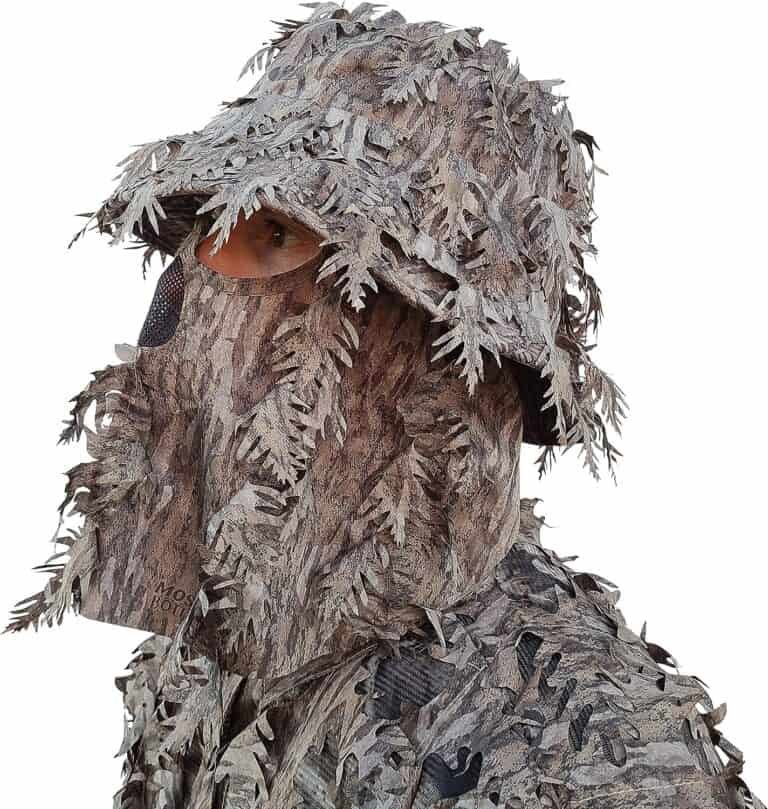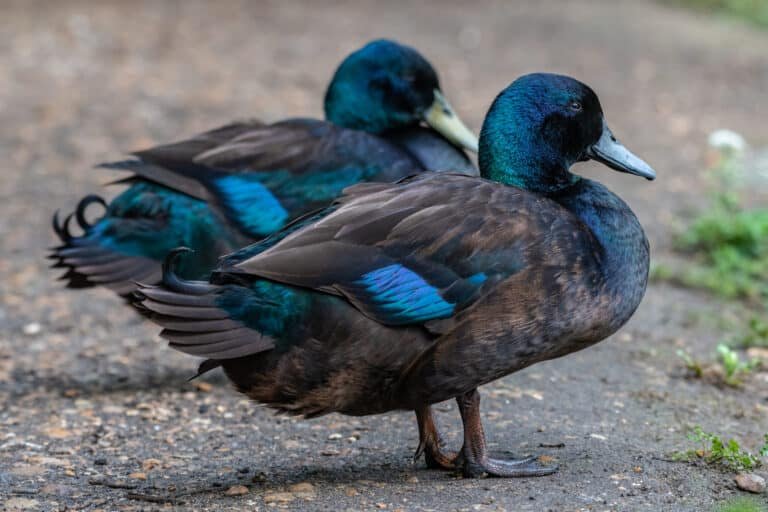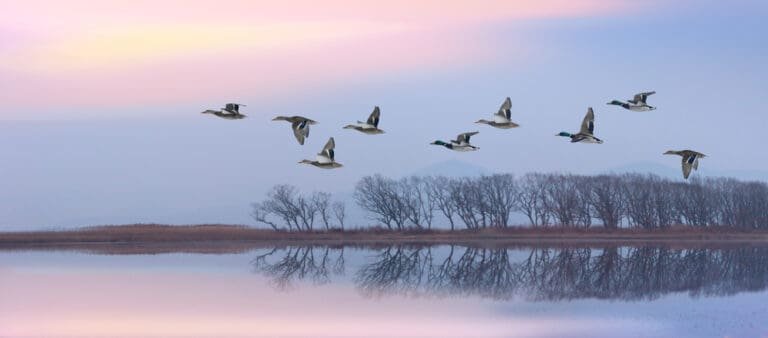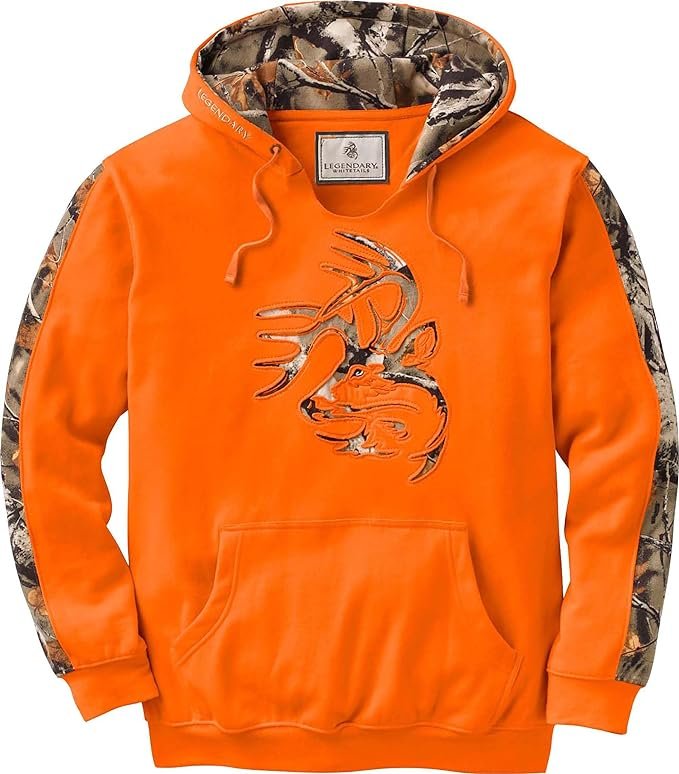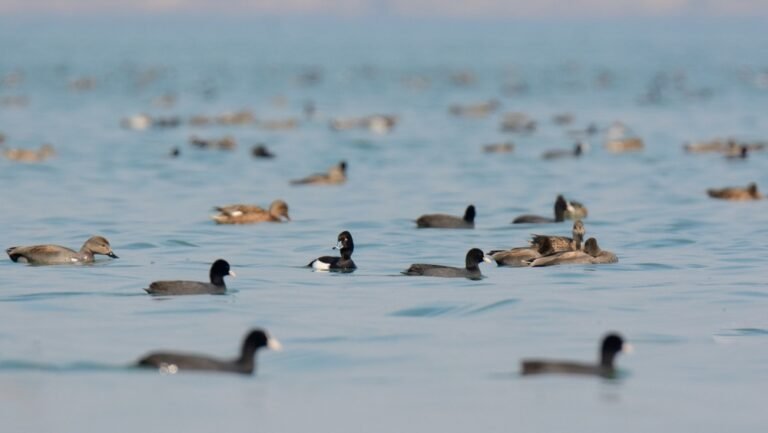Duck Species – Why You Need to Know the Difference
Ducks, an enchanting and diverse group of waterfowl belonging to the Anatidae family, captivate nature enthusiasts and casual observers alike. With their distinctive features, including webbed feet, waterproof feathers, and broad bills adapted for filter-feeding or herbivorous diets, duck species are well-suited for their aquatic habitats. These lively avian creatures can be found across various environments worldwide, from freshwater lakes and rivers to coastal marshes and even icy tundra regions.
Brief Overview of Ducks as a Diverse Group of Waterfowl
Within the diverse Anatidae family, ducks encompass various species with unique characteristics. From the iconic Mallard (Anas platyrhynchos) to the flamboyant Wood Duck (Aix sponsa), these waterfowl exhibit an astonishing array of colors, patterns, sizes, and ecological adaptations.
Ducks are further classified into different genera based on their anatomical features, such as bill morphology and behavior. This taxonomy allows scientists to categorize ducks into distinct groups with common traits.
Importance of Ducks in Various Ecosystems
Ducks play a fundamental role in maintaining the health and balance of the various ecosystems they inhabit. As adept swimmers and divers capable of foraging underwater for food sources like aquatic plants, invertebrates, or fish eggs, ducks contribute significantly to nutrient cycling within wetland habitats. Moreover, ducks aid in plant propagation and promote biodiversity by dispersing seeds through their digestive system or attaching them to their feathers during migration journeys across vast distances.
Cultural Significance
Throughout history, ducks have held immense cultural significance across different societies worldwide. In many cultures, they are revered as symbols of fertility due to their ability to lay large clutches of eggs each year. They have also been associated with luck, prosperity, and freedom.
Furthermore, ducks have played pivotal roles in folklore, myths, and traditional stories, often representing loyalty, adaptability, and resilience. Their beauty and charm have inspired numerous artistic endeavors, from paintings to literature to children’s cartoons.
Overall, ducks are not only remarkable creatures but also essential contributors to the ecosystems they inhabit. Understanding their diversity and appreciating their cultural significance allows us to value and conserve these fascinating waterfowl for future generations.
Taxonomy and Classification
The Scientific Classification System for Ducks
The study of taxonomy allows us to understand the intricate relationships between different species, providing a framework for classifying and categorizing organisms. Taxonomy follows a systematic approach within ducks based on shared characteristics and evolutionary history. Ducks belong to the Anatidae family, a diverse waterfowl group that includes swans and geese.
This family is further classified into subfamilies, tribes, genera, and species. The scientific classification system used for ducks, known as binomial nomenclature, was introduced by Carl Linnaeus in the 18th century.
Each duck species is assigned a unique two-part name consisting of its genus (a broader category) and its specific epithet (a more specific identifier). This system ensures clarity in identifying and referencing different duck species.
An Overview of Different Genera and Species within the Anatidae Family
The Anatidae family encompasses numerous genera and species, each with distinct characteristics contributing to their unique ecological niches. Some notable genera within this family include Anas (the mallards), Aix (the wood ducks), Tadorna (the shelducks), Aythya (the diving ducks), and Mergus (the mergansers), among others. These genera house multiple species with varying traits such as size, coloration, habitat preferences, feeding habits, mating behaviors, and geographical distribution patterns.
For instance, the genus Anas comprises several well-known duck species across North America, Europe, and Asia, like the Mallard (Anas platyrhynchos). Meanwhile, the fascinating Wood Duck (Aix sponsa) belongs to the genus Aix and is known for its striking plumage patterns.
Other lesser-known but intriguing examples include the Rajah Shelduck (Tadorna rajah) with its vibrant coloration and the Baikal Teal (Sibirionetta Formosa), a small-sized duck adorned with intricate feather patterns. The diverse array of genera and species within the Anatidae family showcases the remarkable adaptability and beauty found among different duck species, captivating scientists and nature enthusiasts alike.
By delving into the taxonomy and classification of ducks, we gain a deeper appreciation for their evolutionary history, biological diversity, and ecological significance. Understanding how ducks are categorized allows us to recognize their unique attributes while highlighting the importance of conserving these remarkable avian creatures.
Mallard (Anas platyrhynchos)
The Majestic Plumage and Bill of the Mallard
The Mallard, scientifically known as Anas platyrhynchos, showcases many physical characteristics. Its plumage exhibits an elegant blend of iridescent green head, bright yellow bill, white neck ring, chestnut breast, grayish-brown wings, and white underparts. The male, or drake, is particularly striking with its vibrant colors.
In contrast, the female plumage tends to be more hidden with mottled brown feathers that provide excellent cover during nesting periods. The Mallard’s bill is uniquely shaped with a wide, flat base and serrated edges that aid in filtering small invertebrates and plant matter from water sources.
Habitat Preferences and Global Distribution
The Mallard is one of the most widespread duck species in North America, Europe, and Asia. Its adaptability allows it to thrive in diverse habitats ranging from freshwater marshes to rivers and lakes.
They even inhabit artificial environments such as city ponds and suburban parks. During the breeding season, Mallards prefer nesting near water bodies with dense vegetation for protection but may also nest in ornamental gardens or fields if suitable conditions are present.
Behavioral Traits: Nesting Habits and Feeding Behavior
Regarding nesting habits, the female builds her nest by excavating a shallow depression lined with vegetation close to water sources. These nests are often concealed among tall grasses or shrubs to protect against predators.
Female Mallards lay an average clutch size of 8-13 eggs, which she diligently incubates for about 26-28 days until they hatch into adorable ducklings. The feeding behavior of Mallards varies depending on habitat availability.
They are considered dabbling ducks, meaning they feed by tipping their bodies forward and upending in shallow water, reaching for submerged vegetation or small aquatic invertebrates. However, Mallards are highly adaptable and will readily adapt their diet to include grains, seeds, insects, worms, and even small fish when such resources are available.
Wood Duck (Aix sponsa)
The Exquisite Plumage and Crested Head of the Wood Duck
The Wood Duck (Aix sponsa) is renowned for its beautiful plumage. The male Wood Duck dons a vibrant combination of iridescent green and purple head with intricate white lines around the eye. Its chest features bold red-brown tones that fade into a strikingly patterned buffy underbelly.
One of its most captivating features is the elegant crest on its head. The female Wood Duck showcases more muted colors but still exhibits a distinctive pattern with shades of brown and white.
Habitat Requirements: Wetlands and Forested Areas
Wood Ducks have specific habitat preferences centered around wetlands with plentiful trees or wooded areas adjacent to calm water bodies such as lakes or slow-moving rivers. They particularly favor habitats where they can find natural tree cavities or abandoned woodpecker holes for nesting. These ducks are often found in swamps, marshes, beaver ponds, and forested wetlands where they can easily access water and trees.
Reproduction Habits: Cavity Nesting and Brood Rearing
Unlike many other duck species that build nests on the ground or among vegetation, Wood Ducks have an intriguing nesting strategy. They nest inside tree cavities at varying heights above ground level.
The female Wood Duck will lay 9-14 eggs per clutch in these cavities before incubating them for approximately 30 days until hatching occurs. The Wood Duck is known for its unique behavior of “jumping” from the nest tree shortly after hatching.
The ducklings, born precocial (able to walk and swim almost immediately), make a remarkable leap from the nest cavity, often several meters above the ground. Once on the forest floor, they quickly follow their mother to nearby water sources, where they learn to swim and forage under her careful guidance.
Pintail (Anas acuta)
The Graceful Appearance of Pintails: Long Necks, Pointed Tails, and Elegance
Pintail ducks (Anas acuta) possess a distinct appearance that sets them apart from other duck species. They exude elegance with their slender bodies, long necks, and pointed tails extending gracefully behind them.
The male Pintail boasts a unique color palette; its head is chocolate brown with a white stripe running up its neck, while the rest exhibits pale gray feathers with intricate black markings. Females have more subdued plumage with mottled brown tones.
Global Distribution Patterns: Breeding Season vs Winter Migration
Pintails undertake remarkable migration journeys that span across continents during different seasons. During breeding season, Pintails can be found in northern parts of North America and Eurasia, including Arctic regions.
However, as winter approaches and resources become scarce in these colder regions, Pintails migrate southward to find more favorable conditions. They often travel thousands of miles to warmer areas, such as the southern United States or even as far as Central America.
Feeding Behaviors: Diet Preferences and Foraging Techniques
Pintails are dabbling ducks that commonly feed by tipping forward in shallow water while grazing on aquatic vegetation or probing mudflats for small invertebrates like insects or crustaceans. They have a preference for ponds, lakes, and flooded fields where they can find an abundance of food resources. Pintails are particularly adept at foraging in shallow waters and possess long necks that easily reach submerged vegetation or prey items.
Depending on seasonal availability, their versatile diet includes seeds, grains, aquatic plants, and various invertebrates; with their remarkable physical characteristics, habitat preferences, and unique behaviors, the Mallard, Wood Duck, and Pintail are just a few examples of the fascinating diversity within the world of duck species.
Each species has evolved distinct traits to adapt to different environments and fulfill specific ecological roles. Understanding these aspects helps deepen our appreciation for these beautiful waterfowl and their vital place in our natural world.
Rare or Lesser-known Duck Species
Radjah Shelduck (Tadorna radjah)
The Radjah Shelduck, also known as the Burdekin Duck, is a stunning species with unique physical attributes that make it stand out among its duck relatives. It boasts striking coloration, characterized by a rich chestnut body and contrasting black head and neck.
The males have an extra elegance with their white wing patches and a distinctive green speculum on the wings. These ducks prefer coastal regions of Australia, particularly estuaries, tidal flats, and mangroves.
However, they can also be found in freshwater wetlands near the coast. Sadly, the conservation status of the Radjah Shelduck is a cause for concern due to habitat loss caused by human development along coastal areas.
Baikal Teal (Sibirionetta formosa)
The Baikal Teal is a lesser-known duck species that captivates with its small size and intricate feather patterns. These ducks display sexual dimorphism, where males sport vibrant hues during the breeding season while females exhibit more muted colors year-round. The males boast ornate plumage with intricately patterned feathers on their faces and body in shades of green, brown, and white.
Their preference for wetlands extends beyond borders as these remarkable birds breed in Eastern Siberia but migrate to wintering grounds as far as Japan and Korea. Despite facing challenges, such as habitat degradation in their breeding areas due to human activities, efforts are being made to conserve this beautiful species.
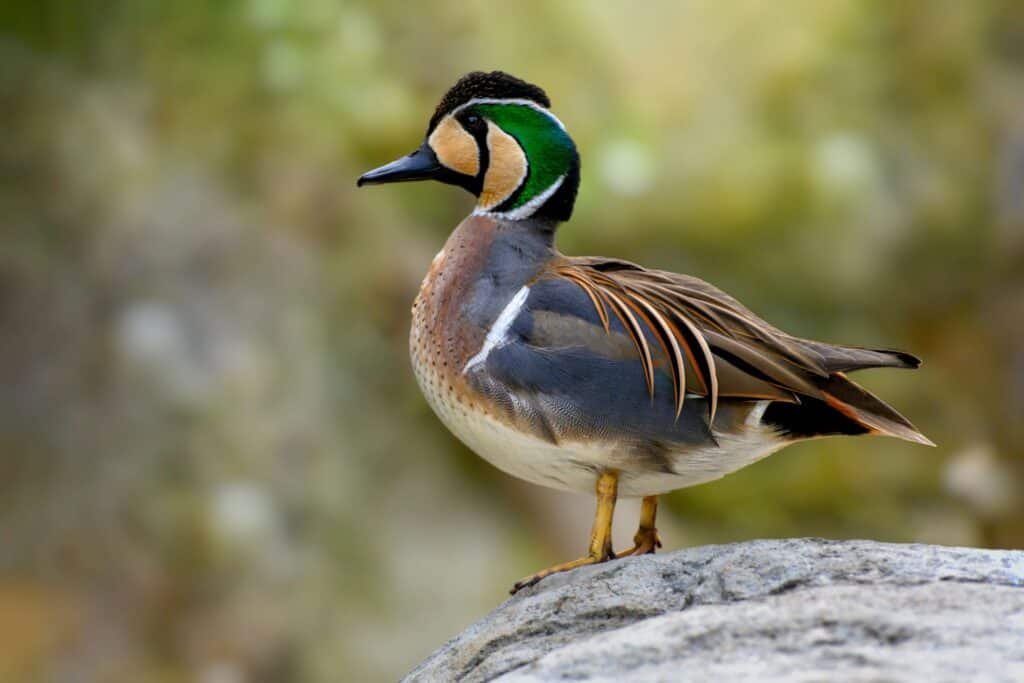
Conclusion
Ducks are undoubtedly fascinating creatures that grace our waterways with their beauty and charm. From the well-known Mallards to the rare Radjah Shelducks and Baikal Teals discussed here, each species brings its own unique qualities to the avian world. While some species face conservation challenges due to habitat loss, it’s heartening to see the efforts being made to protect and preserve these remarkable birds.
By raising awareness and actively participating in conservation initiatives, we can ensure that future generations will continue to be enchanted by the diversity and wonder of duck species around the world. Let us appreciate these marvelous creatures and work together towards their sustainable coexistence with humanity.

